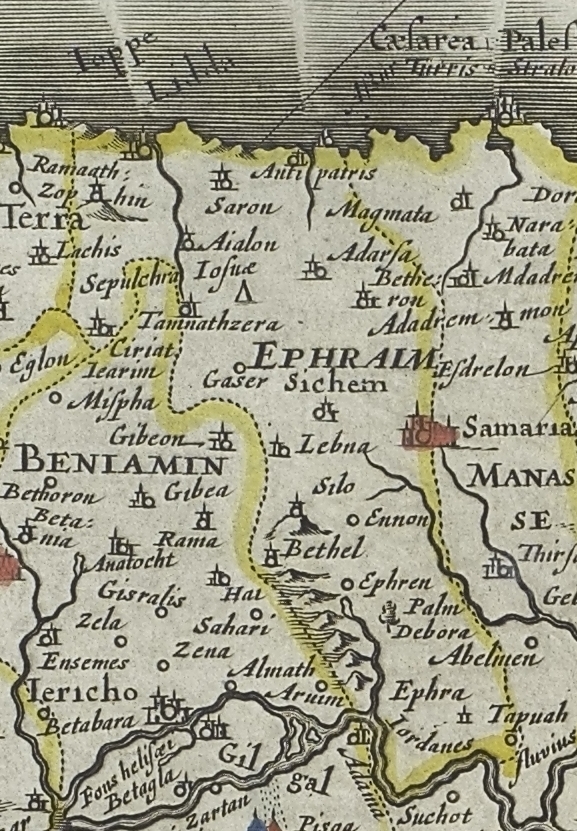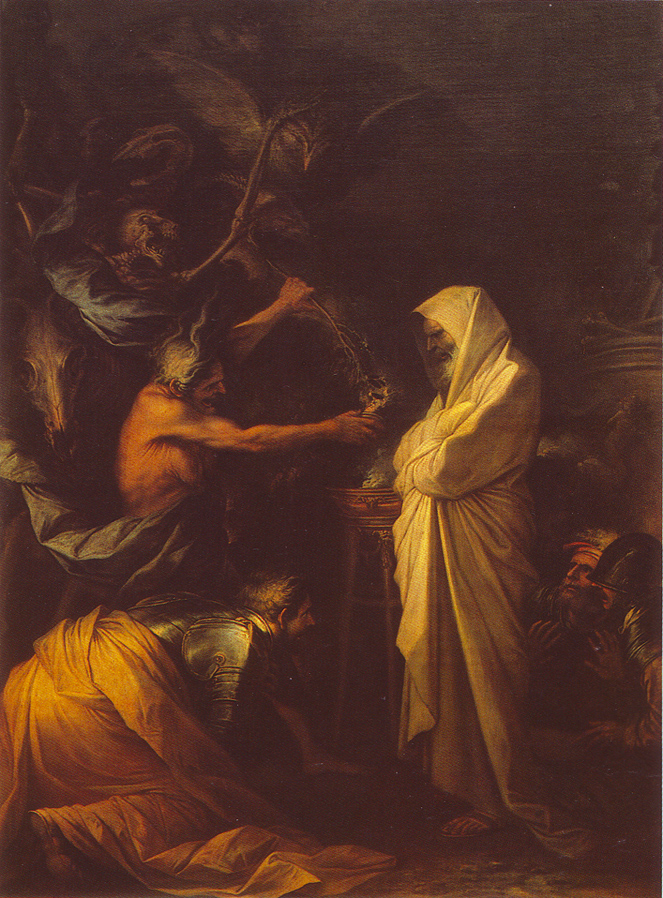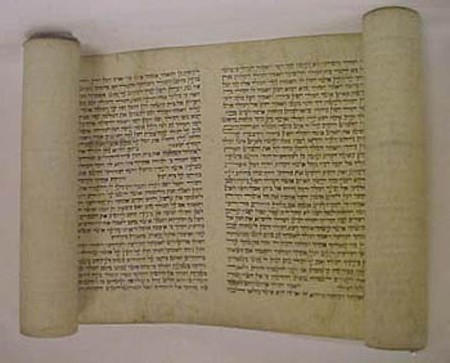|
Books Of Samuel
The Book of Samuel () is a book in the Hebrew Bible, found as two books (1–2 Samuel) in the Old Testament. The book is part of the Deuteronomistic history, a series of books (Book of Joshua, Joshua, Book of Judges, Judges, Samuel, and Books of Kings, Kings) that constitute a theological history of the Israelites and that aim to explain Torah, God's law for Israel under the guidance of the prophets. According to Jewish tradition, the book was written by Samuel, with additions by the prophets Gad (prophet), Gad and Nathan (prophet), Nathan, who together are three Biblical prophet, prophets who had appeared within 1 Chronicles in its account of David's reign. Modern scholarly thinking posits that the entire Deuteronomistic history was composed by combining a number of independent texts of various ages. The book begins with Samuel's birth and Yahweh's call to him as a boy. The story of the Ark of the Covenant follows. It tells of Israel's oppression by the Philistines, which brou ... [...More Info...] [...Related Items...] OR: [Wikipedia] [Google] [Baidu] |
Kingdom Of Israel (united Monarchy)
The Kingdom of Israel (Biblical Hebrew, Hebrew: מַמְלֶכֶת יִשְׂרָאֵל, ''Mamleḵeṯ Yīśrāʾēl'') was an History of ancient Israel and Judah, Israelite kingdom that may have existed in the Southern Levant. According to the Deuteronomistic history in the Hebrew Bible, a United Monarchy or United Kingdom of Israel existed under the reigns of Saul, Ish-bosheth, David, and Solomon, encompassing the territories of both the later kingdoms of Kingdom of Judah, Judah and Kingdom of Israel (northern kingdom), Israel. Whether the United Monarchy existed—and, if so, to what extent—is a matter of ongoing academic debate. During the 1980s, some biblical scholars began to argue that the archaeological evidence for an extensive kingdom before the late 8th century BCE is too weak, and that the methodology used to obtain the evidence is flawed. Scholars remain divided among those who support the historicity of the biblical narrative, those who doubt or dismi ... [...More Info...] [...Related Items...] OR: [Wikipedia] [Google] [Baidu] |
Sabaoth
Judaism has different names given to God, which are considered sacred: (), (''Adonai'' ), ('' El'' ), ( ), ('' Shaddai'' ), and ( ); some also include I Am that I Am.This is the formulation of Joseph Karo (SA YD 276:9). Maimonides (MT Yesodei haTorah 6:2), Jacob ben Asher (AT YD 276), and Isaac Alfasi (HK Menachot 3b) also included I Am that I Am, as do many later authorities, including Moses Isserles (SA YD 276:9). The original lists are found in y. Megillah 1:9 and b. Shavuot 35a, with some MSs agreeing with each authority. Maimonides and followers give the number of names as seven; however, manuscript inconsistency makes it difficult to judge which are included. Authorities including Asher ben Jehiel (''Responsa'' 3:15), the Tosafists (b. Sotah 10a), Yechiel of Paris (cited ''Birkei Yosef, Oraḥ Hayyim'' 85:8), Simeon ben Zemah Duran, Yaakov ben Moshe Levi Moelin, and Moses Isserles (SA YD 276:13), include the term Shalom as well. Early authorities considered ... [...More Info...] [...Related Items...] OR: [Wikipedia] [Google] [Baidu] |
Hannah (biblical Figure)
Hannah (; ''Ḥannā'' "favor, grace") is one of the wives of Elkanah mentioned in the First Book of Samuel. According to the Hebrew Bible she was the mother of Samuel. Biblical narrative The narrative about Hannah can be found in . Outside of the first two chapters of 1 Samuel, she is not otherwise mentioned in the Bible. In the biblical narrative, Hannah is one of two wives of Elkanah. The other, Peninnah, had given birth to Elkanah's children, but Hannah remained childless. Nevertheless, Elkanah preferred Hannah. According to Lillian Klein, the use of this chiasmus underscores the standing of the women: Hannah is the primary wife, yet Peninnah has succeeded in bearing children. Hannah's status as primary wife and her barrenness recall Sarah and Rebecca in Genesis 17 and Genesis 25 respectively. Klein suggests that Elkanah took Peninnah as a second wife because of Hannah's barrenness. [...More Info...] [...Related Items...] OR: [Wikipedia] [Google] [Baidu] |
Peninnah
Peninnah ( ''Pəninnā''; sometimes Transliteration, transliterated ''Penina'') was one of Elkanah (husband of Hannah), Elkanah's two wives, briefly mentioned in the first Book of Samuel (1 Samuel 1:2). Her name derives from the word (''pəninā''), meaning "pearl." Biblical account Peninnah was less favored than Elkanah's other wife, Hannah (Bible), Hannah; although she had borne him children whilst Hannah was childlessness, childless, Peninnah also brought grief and disharmony to the household by her mocking of the Infertility, infertile Hannah. Peninnah would taunt Hannah for being childless. Rabbinical tradition has it that she would grieve Hannah by means of ordinary everyday activities, taking pains to remind her, at all hours of the day, of the difference between them. According to Jewish writer Lillian Klein, "Because the reader’s sympathies are directed toward the childless Hannah, Peninnah comes across as a malicious woman. In fact, she is probably a literary convent ... [...More Info...] [...Related Items...] OR: [Wikipedia] [Google] [Baidu] |
Ramathaim-Zophim
Ramathaim-Zophim (), also called Ramah () and Ramatha in the Douay–Rheims Bible translation (Ramathaimsophim in the Vulgate), is a city from the Hebrew Bible, the home town and resting place of prophet Samuel. The name of the town means "the heights of the views." Identification Ramah, the home of Elkanah, Samuel's father (), the birthplace of Samuel (Bible), Samuel and the seat of his authority (), the town is frequently mentioned in the history of that prophet and of David (). Here Samuel died and was buried (). The historian Josephus distinguishes between Ramathaim, "a city of the tribe of Ephraim," and Ramah, the burial place of Samuel the prophet, but he does not explicitly say that these were two different places. Ramathaim-Zophim has been tentatively identified with one of two sites. One of them is the modern Palestinians, Palestinian village of Nabi Samwil, the other the former village, now town, of er-Ram. Er-Ram as Ramah Ramah, according to Eusebius' ''Onomasticon ( ... [...More Info...] [...Related Items...] OR: [Wikipedia] [Google] [Baidu] |
Tribe Of Ephraim
According to the Hebrew Bible, the Tribe of Ephraim (, ''ʾEp̄rayim,'' in Pausa, pausa: , ''ʾEp̄rāyim'') was one of the Twelve Tribes of Israel. The Tribe of Manasseh, together with Ephraim, formed the Tribe of Joseph. It is one of the Ten Lost Tribes. The etymology of the name is disputed.For the etymology, see Ephraim as portrayed in biblical narrative According to the Bible, the Tribe of Ephraim is descended from a man named Ephraim, who is recorded as the son of Joseph, the son of Jacob, and Asenath, the daughter of Potiphera. The descendants of Joseph (son of Jacob), Joseph formed two of the tribes of Israel, whereas the other sons of Jacob were the founders of one tribe each. The Bible records that the Tribe of Ephraim entered the land of Canaan during its conquest by Joshua, a descendant of Ephraim himself. However, many archeologists have abandoned the idea that Joshua carried out a conquest of Canaan similar to that described in the Book of Joshua, seeing Jews ins ... [...More Info...] [...Related Items...] OR: [Wikipedia] [Google] [Baidu] |
Elkanah
Elkanah ( ''’Ĕlqānā'' "El (deity), El has purchased") was, according to the Books of Samuel, First Book of Samuel, the husband of Hannah (biblical figure), Hannah, and the father of her children including her first, Samuel. Elkanah practiced polygamy; his other wife, less favoured but bearing more children, was named Peninnah. The names of Elkanah's other children apart from Samuel are not given. Elkanah plays only a minor role in the narrative, and is mostly a supporting character to Eli (biblical figure), Eli, Hannah, and Samuel. Lineage According to 1 Samuel 1, Elkanah was the son of Jeroham, who was the son of Elihu, who was the son of Tohu, who was the son of Zuph. He is described as having originated from Zuph, specifically Ramathaim-Zophim, which was part of the tribal lands of Ephraim. While he is called an Ephraimite in 1 Samuel, the Books of Chronicles state that he was a Levite. Elkanah lived in the Mount of Ephraim, mountains of Ephraim (1 Chronicles 6:16-30, 33 ... [...More Info...] [...Related Items...] OR: [Wikipedia] [Google] [Baidu] |
Samuel (Bible)
Samuel is a figure who, in the narratives of the Hebrew Bible, plays a key role in the transition from the biblical judges to the United Kingdom of Israel under Saul, and again in the monarchy's transition from Saul to David. He is venerated as a prophet in Judaism, Christianity, and Islam. In addition to his role in the Bible, Samuel is mentioned in Jewish rabbinical literature, in the Christian New Testament, and in the second chapter of the Quran (although the text does not mention him by name). He is also treated in the fifth through seventh books of '' Antiquities of the Jews'', written by the Jewish scholar Josephus in the first century. He is first called "the Seer" in 1 Samuel 9:9. Biblical account Family Samuel's mother was Hannah and his father was Elkanah. Elkanah lived at Ramathaim in the district of Zuph. His genealogy is also found in a pedigree of the Kohathites (1 Chronicles 6:3–15) and in that of Heman the Ezrahite, apparently his grandson (1 Chron ... [...More Info...] [...Related Items...] OR: [Wikipedia] [Google] [Baidu] |
Ernst Josephson
Ernst Abraham Josephson (1851–1906) was a Swedish painter and poet. He specialized in portraits, Genre art, genre scenes of folklife and folklore. Background He was born to a middle-class family of merchants of Jewish ancestry. His uncle Ludvig Josephson (1832–1899) was a dramatist and his uncle Jacob Axel Josephson (1818–1880) was a composer. When he was ten, his father Ferdinand Semy Ferdinand Josephson (1814–1861) left home and he was raised by his mother, Gustafva Jacobsson (1819–1881) and three older sisters. Career With his family's support, Josephson began to pursue art professionally at the age of sixteen, enrolling at the Royal Swedish Academy of Fine Arts. His primary instructors there were Johan Christoffer Boklund and August Malmström. He was there until 1876, when he received a Royal Medal for painting. After leaving the academy, he and his friend and fellow artist Severin Nilsson (1846–1918) visited Italy, Germany, and the Netherlands, where they st ... [...More Info...] [...Related Items...] OR: [Wikipedia] [Google] [Baidu] |
Christian Biblical Canon
A biblical canon is a set of texts (also called "books") which a particular Jewish or Christian religious community regards as part of the Bible. The English word ''canon'' comes from the Greek , meaning ' rule' or ' measuring stick'. The use of ''canon'' to refer to a set of religious scriptures was first used by David Ruhnken, in the 18th century. Various biblical canons have developed through debate and agreement on the part of the religious authorities of their respective faiths and denominations. Some books, such as the Jewish–Christian gospels, have been excluded from various canons altogether, but many disputed books are considered to be biblical apocrypha or deuterocanonical by many, while some denominations may consider them fully canonical. Differences exist between the Hebrew Bible and Christian biblical canons, although the majority of manuscripts are shared in common. Different religious groups include different books in their biblical canons, in varying ... [...More Info...] [...Related Items...] OR: [Wikipedia] [Google] [Baidu] |
Septuagint
The Septuagint ( ), sometimes referred to as the Greek Old Testament or The Translation of the Seventy (), and abbreviated as LXX, is the earliest extant Greek translation of the Hebrew Bible from the original Biblical Hebrew. The full Greek title derives from the story recorded in the Letter of Aristeas to Philocrates that "the laws of the Jews" were translated into Koine Greek, the Greek language at the request of Ptolemy II Philadelphus (285–247 BC) by seventy-two Hebrew sofer, translators—six from each of the Twelve Tribes of Israel.Megillah (Talmud), Tractate Megillah 9](9a)/ref>Soferim (Talmud), Tractate Soferim 1](1:7-8)/ref> Textual criticism, Biblical scholars agree that the Torah, first five books of the Hebrew Bible were translated from Biblical Hebrew into Koine Greek by Jews living in the Ptolemaic Kingdom, centred on the History of the Jews in Alexandria, large community in Alexandria, probably in the early or middle part of the 3rd century BC. The remainin ... [...More Info...] [...Related Items...] OR: [Wikipedia] [Google] [Baidu] |






